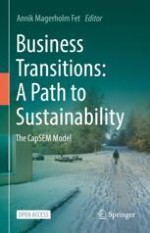15.1 Introduction
15.2 The Construction Sector: Negative Environmental Impacts and Challenges
15.2.1 Opportunities: Functional Buyer-Supplier Ecosystem for Green Public Procurement
-
Level 4: the public buyers and governmental leaders
-
Level 3: the construction companies and developers
-
Level 2: subcontractors and equipment suppliers
-
Level 1: the construction site itself
15.2.2 Framework for Innovation Oriented Public Procurement (IOPP)
15.2.3 Innovation-Oriented Public Procurement: Framework and Dialogue
15.2.4 Early Market Dialogue for Innovation-Oriented Public Procurement
CapSEM level | IOPP level | Dominant IOPP policy approach (Lember et al. 2014) | Typical dialogue participants | Example project actors in IOPP for ZEMCONs |
|---|---|---|---|---|
Level 4 | Cross-national, network of large cities | IOPP as technology policy – Driving the development of electrical NRMM | Large, global NRMM manufacturers, facilitating third parties (EU), network of large buyers (cities) | C40 mayors’ commitment to actions for clean construction; ICLEI and EUROCITIES, big buyers initiative (BBI), Scandinavian green public procurement Alliance (SGPPA) on NRMMs |
National driven by large cities | IOPP as generic innovation policy, technology policy or R & D policy– Using dialogue to align expectations and strengthen mutual insights | Large city, additional (smaller) cities, national third party, construction firms, other regional ecosystem members | Finnish green deal with a commitment on emission free construction sites | |
City level | IOPP as generic innovation policy – Aligning local ecosystem members, both internally and externally for a range of projects or more in general | Individual city, internal stakeholders, local construction firms, national third party, regional ecosystem members, e.g. electricity providers | Oslo, Copenhagen, Helsinki, Trondheim, Budapest and Amsterdam, among others. | |
Level 3 | Project level | IOPP as generic policy – Aligning emission targets and procurement specifications for a specific construction project | Individual city, primarily procurement and EM advisors, local supply network (construction firms, subcontractors) | Omsorgsbygg, Volvo, Caterpillar, and Hitachi construction machinery, among others. |
